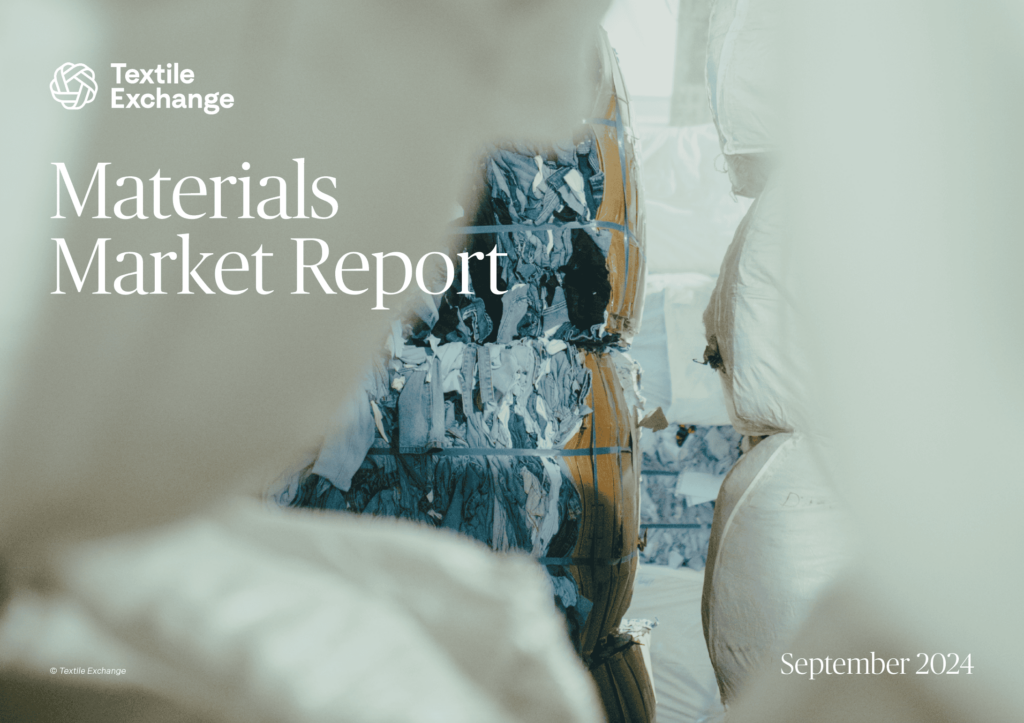Textile Exchange’s Materials Market Report has been the leading source for global fiber and materials production volumes for the last decade. It helps inform the textile industry’s efforts to reduce emissions associated with raw material production in line with a 1.5-degree temperature rise pathway.
The latest report, which looks at total fiber volumes used for apparel, home textiles, footwear, or any other application, shows that global fiber production increased 7% from 116 million tonnes in 2022 to 124 million tonnes in 2023. This number is expected to rise to 160 million tonnes in 2030 if current trends continue.
Similarly, the market share of virgin fossil-based synthetics continued to increase in 2023, while that of cotton and recycled fibers slightly declined. These findings highlight a continued reliance on new virgin fossil-based synthetic materials, threatening to undermine the industry’s commitments to its climate goals. It also shows the current limitations of textile-to-textile recycling and an urgent need for innovative solutions, with most recycled polyester still coming from PET bottles.
Amid these concerns, one positive trend that stands out is the increased industry demand for responsible animal fibers through programs like the Responsible Mohair Standard (RMS) and Responsible Alpaca Standard (RAS), both contributing to better animal welfare and environmental management. This indicates the potential of farm-level standards of this kind to increase market recognition of more sustainable practices on the ground.
For many years, Textile Exchange reported on the total fiber and raw materials market, including programs for various levels of “preferred” fibers, as well as the conventional business as- usual. To better reflect this, in 2023, we decided to update the report’s name from the “Preferred Fiber & Materials Market Report” to the “Materials Market Report.”
Discover the key takeaways
- Synthetics continue to dominate: The production of virgin fossil-based synthetic fibers increased from 67 million tonnes in 2022 to 75 million tonnes in 2023. Polyester remained the most produced fiber globally, accounting for 57% of total fiber production.
- Recycled synthetics face challenges: Although recycled polyester fiber production slightly increased in 2023, the overall market share of recycled polyester decreased from 13.6% to 12.5%. For polyamide (nylon), the second most used synthetic fiber, recycled fibers constituted only 2% of the total market share. These trends are attributed to the lower prices and continued production of virgin synthetics, as well as current limitations in recycling technologies. Less than 1% of the global fiber market came from pre- and post-consumer recycled textiles.
- Cotton production saw a slight decline: Total global cotton volumes fell slightly from 25.1 million tonnes in 2022 to 24.4 million tonnes in 2023. However, the share of cotton produced under sustainability programs remained stable, accounting for 29% of all cotton produced.
- Certified wool climbs: Data showed positive trends for wool produced under standards such as the Responsible Wool Standard (RWS), ZQ, SustainaWOOL (GREEN and GOLD), Sustainable Cape Wool Standard (SCWS) and Climate Beneficial programs. This increased from 4.2% in 2022 to 4.8% in 2023. Recycled wool continued to account for around 6% of the global wool market.
- Certified mohair and cashmere reached almost half of market share: Certified fibers such as mohair and cashmere saw notable growth, both with market shares of 47%.
- Manmade cellulosic fibers production increased: Overall MMCF production increased from 7.4 million tonnes in 2022 to 7.9 million tonnes in 2023, representing 6% of the global fiber market.
Source
Textile Exchange, press release, 2024-09-24.
Supplier
Share
Renewable Carbon News – Daily Newsletter
Subscribe to our daily email newsletter – the world's leading newsletter on renewable materials and chemicals














